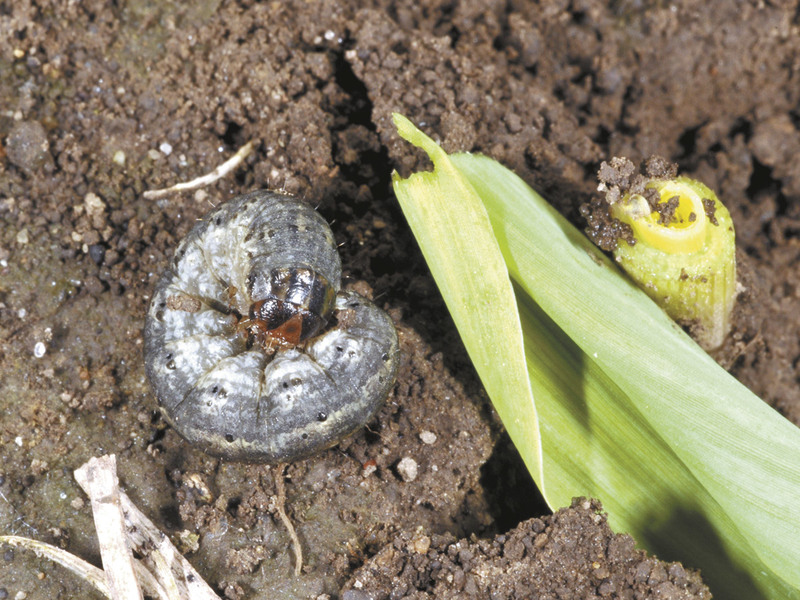In medieval times the common smock was tied with a drawstring at the neck, creating a ruffle. The ruffle grew into the modern shirt collar. Killers, ruffians, hoodlums and ne’er do wells could be brought to justice by collaring them, literally grabbing them by the neck or collar.
There are dastardly killers in the garden that need to be collared, and collared literally. Many of us have had the bad experience of finding our newly-transplanted vegetable plants eaten to the ground or just cut down. The cutter is none other than the aptly named cutworm You can stop cutworms in their tracks by simply putting cardboard collars around your plants so that the cutworms can’t climb over and eat the seedlings. You can make collars by cutting cardboard pieces two inches wide by eight inches long, then stapling them into circles to set around your plants. Press each collar firmly into the soil at least an inch deep.
Before silk was known to come from silk moths, some people believed it came from the colored petals of flowers in the Chinese desert, or even from worms, the silkworms. Like silkworms, cutworms are not worms, but moth larvae.
Cutworms hide beneath garden litter or in the ground all day, coming out at night to feed on plants. Cutworms get their name because the moth larva eats the stem of a seedling, and literally “cuts” it down. Cutworms often attack asparagus, beans, cabbage, carrots, celery, peas, peppers, potatoes and tomatoes.
There are many species of cutworms, each species acting somewhat differently, but all with the same result of dead plants. Cutworms come in many colors including brown, gray, black, green and even pink. Some are even multicolored or have spots and stripes. Usually cutworms are only an inch or two long.
When they are disturbed they curl up into a ball. You might never see them because they prefer to eat at night, but the telltale signs include cut or fallen seedlings and holes in leaves. There are even climbing cutworms that eat holes in tree fruits and buds.
In addition to placing collars around your seedlings, you can try one of the many organic powders available to control cutworms. Most contain B.t. (Bacillus thuringiensis), a safe, yet potent soil-dwelling bacteria that is harmless to people, pets, wildlife and beneficial insects. After the cutworm eats the B.t., it causes the cutworm to stop feeding immediately and die in a few days. B.t. is available as a spray, granular or a dusting powder.
Although most cutworm damage comes early in the spring when transplants are tender, a few vegetables like tomatoes, peppers and celery can be attacked all season, so you may have to keep on the lookout right up until harvest.
Like many pests, cutworm populations often fluctuate year to year, so some years you may not find any at all. Keep your garden free of weeds and rake up any dead plants, leaves and stems to remove egg-laying sites. You can dig up your garden weeks before planting to expose and kill larvae that overwintered in your garden. Tilling the garden in the fall will also expose cutworms before they can live over the winter.
So give your transplants help against cutworms along with a bit of style and wrap their tiny stems with collars, rather than ruffles.




















































